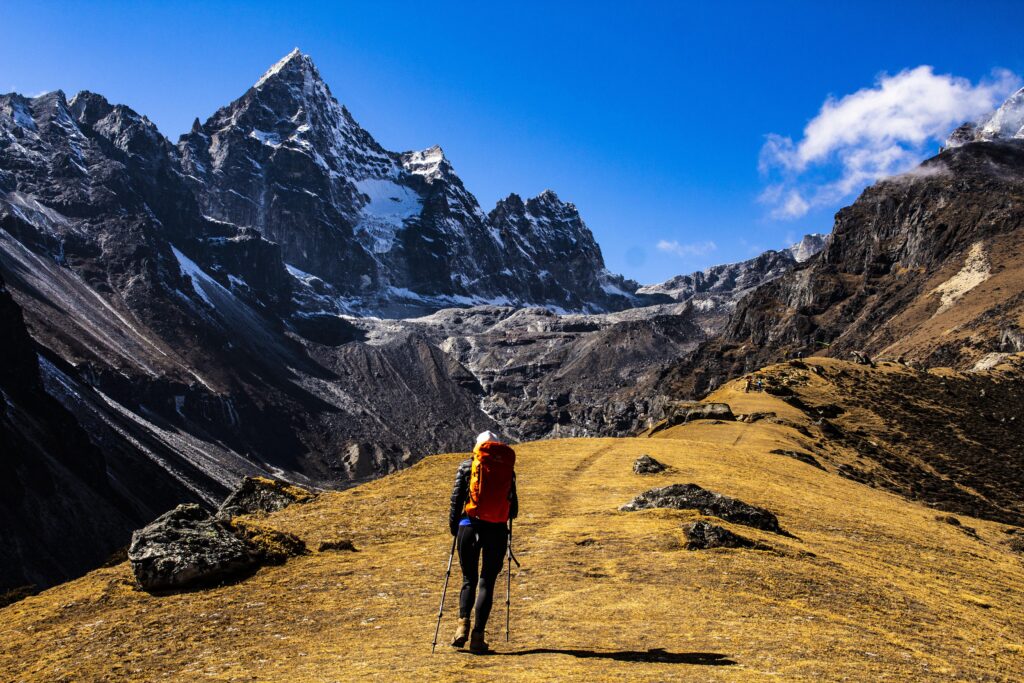The Everest Base Camp Trek is renowned as one of the best hiking routes to the world’s highest peak. It offers a remarkable outdoor adventure in Nepal, allowing trekkers to marvel at the pristine Himalayan panorama, experience the rich Sherpa culture, and witness a multitude of natural wonders. This trek caters to all levels of hikers and takes you through the breathtaking Sagarmatha National Park, where you can behold the majestic sights of the Himalayas, including the towering Mt. Everest (8848m).
The 16-day journey to Everest Base Camp begins upon your arrival in Kathmandu. The second day is dedicated to a sightseeing tour of the historical city, exploring its scenic tourist destinations such as the UNESCO World Heritage Sites of Kathmandu Durbar Square and Boudhanath. From there, you will fly to Lukla, the gateway to Everest, and embark on the trek.
The trail gradually progresses along the Khumbu valley, passing through renowned Sherpa villages like Handing, Monjo, Namche Bazaar, Tengboche, Dingboche, and Gorakshep, ultimately leading to Everest Base Camp. Along the way, you will enter the serene surroundings of Sagarmatha National Park, where you can immerse yourself in the Himalayan wildlife and lush vegetation. Ample rest during the ascent ensures proper acclimatization.
Highlights of the trek include the vibrant Sherpa village of Namche Bazaar and the highest Buddhist monastery in Tengboche. You will also have the opportunity to hike to Kala Patthar, a vantage point offering a close-up view of the region’s numerous peaks, including Mt. Everest (8848m). Throughout the journey, you will be treated to awe-inspiring panoramas of some of the world’s greatest mountains, such as Mount Everest, Lhotse, Nuptse, Cho Oyu, Makalu, and AmaDablam. The Everest Base Camp Trek can be undertaken throughout the year, but it is most commonly done during the spring (March to June) and autumn (September to November) seasons due to favorable weather conditions, excellent visibility, and reliable flights.
How difficult is the Everest Base Camp Trek?
The trek is rated as moderate to strenuous in terms of difficulty. You will hike for approximately 5 to 6 hours per day for 12 days, with two rest days for acclimatization. If you are reasonably fit, you should be able to carry your own backpack, although hiring a porter can make it easier. No technical climbing skills are required. It is important to note that regardless of your fitness level, ascending too quickly can result in altitude sickness.
The Everest Base Camp Trek covers a distance of 120 km (75 mi), which averages to around 15 km per day over a two-week period. The trail follows a natural path with typical Nepalese trekking terrain, involving frequent ascents and descents. While extreme fitness is not necessary to cover the distance, the altitude presents a significant challenge as the trek starts at 2800m and reaches base camp at 5364m. The moderate difficulty of the route is influenced by factors such as the weight of your backpack, which can be lightened with the assistance of a porter, and the season, as the trek becomes more challenging when faced with cold and adverse conditions. To help you prepare for the Everest Base Camp Trek, we have provided a comprehensive travel guide with essential things to do before embarking on your journey.
As a tour and trekking company in Nepal, we prioritize the satisfaction of our valuable clients. We offer the flexibility to customize trips according to your preferences and provide excellent services. Our knowledgeable guides are dedicated to ensuring a memorable and fulfilling experience throughout your Everest Base Camp Trek.













